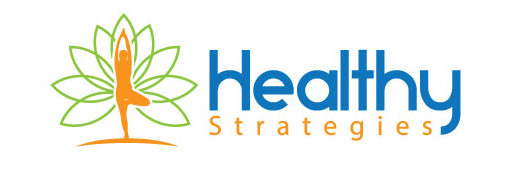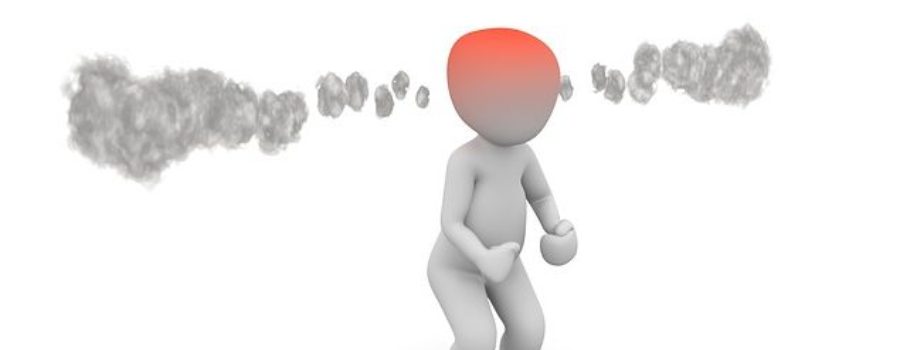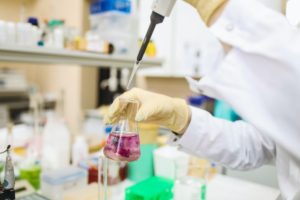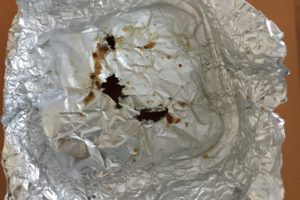Why Do We Get Achiness During Infections?
Most of my blogs start from some health observations I make about myself and thereafter I research the specialty literature trying to find an explanation. Now I will focus on the achiness that accompanies my numerous infections and lately, I noticed I get very achy even before other symptoms that point to the actual site of infection. I know that some medical terminology may be off-putting, but I don’t think would be fair just saying “I researched this topic, believe me.” I expect that once you navigate past the more complicated terms, the take-home points will be easy to remember.
Anyone who had a viral disease recalls the achiness, which sometimes starts before other symptoms. Flu is notorious for the body aches, but other viral syndromes do the same. Achiness happens during many infections and not just viral, but bacterial as well. The explanation is that viruses and certain components from bacteria wall (membrane) are recognized by the immune cells that trigger the release of pro-inflammatory substances called cytokines. These are responsible for the achiness, among other things.
Bacteria, depending on how they appear under the microscope (after a specific dye has been applied—Gram stain), are classified as Gram-positive or Gram-negative. Although the produced cytokines are somewhat different, their effects are similar for the most part. I will focus now more on the Gram-negative, because some of their structures are more relevant for the points I’m trying to make.
Many of the Gram-negative bacteria are normally found in our intestine and they have certain components in their wall called lipopolysaccharides, or for short LPS; these can stimulate the immune cells. But the LPS fragments can also migrate outside the intestine and trigger an immune response. When they stimulate the immune cells, beside initiating the cascade of signals that leads to achiness during infections, the same cytokines also trigger oxidative stress with free radicals being produced.
The free radicals will attack proteins and fats (lipids), but the most deleterious effects arise from oxidizing the fat constituents that make our cell membranes (in medical terms this process is called lipid per-oxidation). The cellular membranes as well as the membranes of intracellular components consist of structures called polyunsaturated fatty acids.
Our body has the antioxidants to neutralize these free radicals, but when there is an imbalance between the excessive free radicals and the antioxidants, the fight becomes more difficult. This imbalance cannot be prevented or corrected, however, by binging on antioxidant supplements because at high and/or prolonged doses, they too become pro-oxidants!
The pro-inflammatory cytokines (stimulated by LPS) have been linked with the initiation and/or maintenance of metabolic diseases (such as diabetes and metabolic syndrome), autoimmune disorders, damage to the inner vascular structure leading to atherosclerosis, and others. Polyunsaturated fatty acids—the components of membranes, are much more vulnerable to lipid per-oxidation and that’s how cell damage occurs.
A similar oxidation process affects the fats in our diet. Frying oils are heated to high temperatures for extended periods of time and under such conditions, lipids become increasingly peroxidised. This results in a number of unstable and toxic compounds that can induce oxidative stress and impair the antioxidant defense system, contributing to a loss of intestinal integrity and activating pro-inflammatory factors.
Just to give a better idea about what results from fat oxidation, I need to use some examples. Surely you have reopened a forgotten box of potato chips, a can of nuts, or a bottle of olive oil you thought to still be good but noticed the unpleasant smell or even taste of rancid fat. That is the consequence of fat oxidation. Not pleasant.
The details about the gut bacteria and their ability to trigger an immune response, bring me again to the topic of SIBO (Small Intestine Bacterial Overgrowth).In this condition there are way more numerous bacteria in the small bowel and these are the type that have LPS in their cellular wall. Therefore, they can interact with the gut immune cells and trigger an amplified cascade of signals leading to the release of more pro-inflammatory cytokines. I think that nowadays SIBO is a lot more frequent than physicians suspect. Some medical articles describe the association of SIBO with fibromyalgia and how treating SIBO also improves the body aches.
Dealing with SIBO for many years, I did notice the increased body aches even when I was following the proper diet. I knew that the gut bacteria can trigger pro-inflammatory substances. Given my sensitivity to ingredients derived from ethylene oxide, I also wondered if this component is produced in our body because of SIBO.
To my pleasant surprise, I did find research articles (two decades old) describing that even under normal circumstances, the interaction between the gut microbial flora and the dietary fats leads to formation of tiny amounts of ethylene, and subsequently to ethylene oxide. These studies were mainly concerned with the role of the ethylene oxide that our body produces and its role as a carcinogen.
Our defense mechanisms are also in place. A healthy diet, with proper amounts of unsaturated fats (from olive oils and nuts), also brings the right amounts of antioxidants, (such as vitamin E—often incorporated in the healthy greens or other vegetables that often accompanies the healthy fat dishes), to limit fats oxidation, therefore limiting oxidative stress and the release of possible carcinogens. Beside, a healthy diet also promotes a beneficial, friendly intestinal bacteria.
Back to ethylene oxide, more recent articles show how ethylene can be measured in the breath, increases significantly during infections with the type of bacteria we have in our gut (the Gram-negative ones, containing LPS in their wall structure), reaching its peak before the pro-inflammatory cytokines. This makes ethylene an early marker of bacterial infection. The scientists’ suspicion is that it can also mount the quantities of pro-inflammatory substances released during such infections.
Well, SIBO can be considered a chronic infection and if the interaction of the more numerous gut bacteria with dietary fats (oxidation) can trigger increased amounts of pro-inflammatory substances and ethylene oxide, this can be another explanation for the associated body aches. I believe that in SIBO, because of the more numerous bacteria, the amounts are much higher.
Intestinal bacteria can also penetrate through the wall and lodge somewhere else in the body where they can trigger a different infection, especially if immunity is impaired for other reasons (associated diseases, immunosuppressant medications—including those to treat autoimmune disorders and cancers). If SIBO is the only health issue, the bacteria penetrating the bowel wall are less likely to cause frequent or serious infections, but patients can still experience achiness.
My point is that if we may get body aches from the ethylene oxide that our body produces during stress or infections, or even a less than ideal diet, our exposure to ALL the other products containing ethylene oxide derived ingredients, can cause achiness as well. Not for everybody, but for many of us. The bigger problem is that we don’t know for sure because the medical community didn’t conduct any conclusive studies as of yet. The more unfortunate situation is that people who don’t experience achiness may still develop other medical conditions, because ethylene oxide is associated with many others.
An important detail about the ethylene oxide is that it remains as a contaminant in most of the ingredients derived from it, which are included in almost all the products we use every day (conventional cosmetics, laundry and cleaning products, foods and medications). If you look on some of your cosmetics’ ingredient lists for instance, you may come across chemical names like PEG-40 sorbitan laureate or others that include plant components, such as PEG-8 avocado oil.
They are all produced from the “parent” ethylene oxide, often detected in the final product. You will see many statements that claim the doses are extremely small and therefore safe. I don’t think they’re safe even at the small quantities from individual products, but because they’re included pretty much in almost all the items we use, the daily amounts do add up to much higher values. Our body has the resources to detox the small amounts of ethylene oxide inadvertently produced during fat metabolism, but do we need more from outside sources? I don’t think so.
The National Toxicology Program deems ethylene oxide as a human carcinogen, linked with leukemia, Hodgkin’s disease, pancreatic and stomach cancer. And as if these would not be enough, it is also linked with human reproductive toxicity (infertility in both sexes, developmental abnormalities of the fetus), as well as neurological conditions affecting the peripheral nerves and the brain, producing memory and judgement impairments.
Tackling SIBO is also more difficult for me lately because of the numerous infections and courses of antibiotics. Along with low carbohydrates diet (and there are loads of guidelines on the internet), I still use lots of probiotic foods (kimchi and brined pickles), and the probiotic strain L.Plantarum that somewhat help. I wouldn’t think prebiotics are desirable when dealing with SIBO, I tried it and made me worse. I presume it was because as soon as they reach the small bowel, prebiotics can feed the increased number of bacteria and aggravate the abdominal discomfort. A diet without fried foods from fast food joints or even restaurants, may protect the intestines from the toxic products of fat oxidation. The few fruits and vegetables I can tolerate bring the antioxidants.
As for avoiding the achiness of infections, there are a few options to prevent some from becoming full-blown and needing antibiotics. I find that the cranberry powder containing 36 mg of PAC’s (proanthocyanidins) per capsule is helpful for the urinary infections. A “magic potion” made from organic garlic, onion, ginger, cayenne pepper—all macerated in apple cider vinegar, is very helpful for my family members when an upper respiratory infection seems to start, but doesn’t usually seem to do the trick for me.
Interesting I thought, was when I needed to take clarithromycin I noticed improvement of my achiness before the infection is well under control. Of course I wondered if I was just imagining it, but I wasn’t. Many research articles describe anti-inflammatory properties for this particular antibiotic and others from the same class. There are some proposals to use them in inflammatory conditions, not just infections. Of course that’s not done at the moment because of the current antibiotics stewardship.
Moreover, taking antibiotics for a few days produces for me a different kind of achiness because of their inactive ingredients (many derived from ethylene oxide, usually PEGs). I heard the same side-effect from many patients and couldn’t explain it until I researched and learned about the so-called “inert” ingredients in medications and in many other products that surround us.
However, if you have an autoimmune disorder affecting the joints and need to take an antibiotic for an infection anyway, ask your doctor if clarithromycin is a good choice for that particular infectious episode and see if helps with the achiness.
Resources:
https://academic.oup.com/carcin/article-abstract/10/1/39/465694
https://www.ncbi.nlm.nih.gov/pmc/articles/PMC5529547
https://www.ncbi.nlm.nih.gov/pmc/articles/PMC1905424
https://www.ncbi.nlm.nih.gov/pubmed/20028205
https://www.ncbi.nlm.nih.gov/pubmed/11446271
https://www.nature.com/articles/s41598-017-05930-9



